10WILL A.I. BOTS REPLACE HUMANS ON THE INTERNET?
22 BLOOD, SWEAT AND MASCARA: ROLLER DERBY 101
“BLESSED BE THE FRUIT” CHURCH, STATE AND HATE




10WILL A.I. BOTS REPLACE HUMANS ON THE INTERNET?
22 BLOOD, SWEAT AND MASCARA: ROLLER DERBY 101
“BLESSED BE THE FRUIT” CHURCH, STATE AND HATE


















The revamp of the Skyway is long overdue. Opened in 1989, the Skyway operated only three stations, but was expanded in the subsequent years, with the final addition in 2000. That’s roughly 33 years the Skyway has operated for Jacksonville in and around the downtown area. Famously underutilized, the very existence of the Skyway has been in question, coming off more as an expensive gimmick to deal with parking issues in the downtown core. In 2015, the JTA (Jacksonville Transit Authority) passed a resolution that would modernize and expand the system. They continued to unveil a new driverless system called the Ultimate Urban Circulator or, “U2C.” Despite advances in technology, there are glaring issues with the U2C’s cost, minimal capacity, and safety. Many of these issues stem from the shuttles themselves.
The shuttles feature zero carbon, 360-degree LIDARS, with mixed traffic capabilities, and app real-time responsiveness. These shuttles would also have the capability to operate in tandem or split off into different routes based on customer need. This program ultimately saves on operating costs as well because the shuttles are driverless. On total completion, there will be a much-needed expansion in stops with a three-phase program. The first phase being the Bay Street Innovation corridor, which introduces three miles of mixed traffic stops around the entertainment and sports district. The second phase is a total conversion of the old monorail system to accommodate the new shuttles, with a street-level connection to the Bay Street Innovation corridor. This phase also includes an operations and maintenance facility, with route charging capabilities for shuttles along the Skyway routes. Phase three finally includes the needed routes to Brooklyn, Riverside, San Marco, and Springfield. All of this and more is promised with the advent of new technologies.
Kaleb Mantela

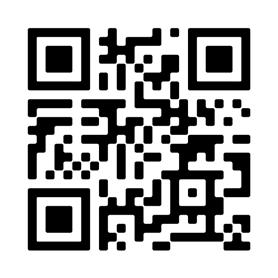
To the Jacksonville Transportation Authority for providing local students free rides to school. Middle and High school students are eligible to ride JTA buses and the First Coast Flyer every day at no cost through JTA’s My Ride 2 School program. To learn more, visit www.jtafla.com
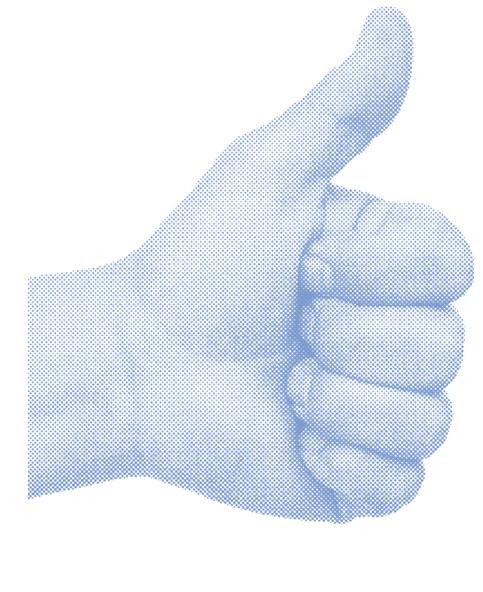
To VyStar Credit Union for creating the MOCA Centennial Scholarship. The four-year scholarship is part of the celebration of the Museum of Contemporary Art Jacksonville’s 100 anniversary. The VyStar MOCA Centennial Scholarship will empower one student to complete a Bachelor of Arts degree in the Department of Art, Art History, and Design at the University of North Florida.
To Senator Rick Scott for being Rick Scott. The former Florida governor is spending millions in an attempt to cover up the fact that he is doing everything he can to block bipartisan legislation to protect access to contraception and IVF. He literally voted nay just one day prior to the launch of his coverup ads hitting the airwaves.. That’s not the worst of it. He is lying in another ad about President Biden and Vice President Kamala Harris indicating that they are responsible for allowing criminals and drugs into our country stating that they support protesters burning American Flags in our nation’s capital.
Recently investigations by various organizations and news outlets have also revealed that Scott is fully behind Project 2025. He plans to ban abortion nationwide and terminate the National Flood Insurance Program. The leaders of Project 2025 have also endorsed Scott’s signature plan to raise taxes on middle class families and end Social Security and Medicare as we know them. MeidasTouch News also uncovered that Scott has actually stated that it is his “honor” to join the group for the launch of Project 2025. He is linked in numerous ways to the Heritage Foundation, of course.

To Phil Perry, Chief Communications Officer for the City of Jacksonville. Perry has implemented policies which are more restrictive and biased towards traditional media than any prior administration. Mayor Deegan’s office has hired a lot of former politicians and their families, but shouldn’t let partisanship interfere with the First Amendment and Constitutional rights of its citizens.

Words by Ambar Ramirez & Carmen Macri

August is your month of rest and relaxation, Aries. The healing planet Venus moves into your 6th House of Health in early August kick-starting a zen month for you. While Mercury remains in retrograde, you will feel a sense of lethargy. Embrace it. It is OK to take a few days for yourself. Your work will still be there when you get back.

Messy, messy, messy, Libra. When will you decide to get your shit in order? Today? Tomorrow? Six months from now? We guess it doesn’t really matter. There will always be some celestial explanation for you being horrible – this month is no different than the 11 others. Oh, Mercury is in retrograde.





Last month, Neptune retrograde cleared your roster of any negative and toxic relationships, Taurus, and it’s finally time to relish in the abundance of love you’ll be receiving. But the most important type of love you need to accept is the one for yourself. Cheesy, we know, but with Mercury going retrograde in Leo on Aug. 14, you’ll need to prioritize yourself and practice patience.
Mercury is in retrograde (again) and here comes miscommunication and misunderstandings all month long. Nothing new to see here. You struggle to find the right things to say, and people tend to have selective hearing when it comes to you. At least this month you can blame it on the stars!
Money, money, money, must be funny when Mercury goes retrograde this month, Cancer. You’ve been working yourself down to the bone, and this month’s retrograde is going to force you to slow down. So you could either prepare for this sudden shift in energy by designating some time to rest or be ready to use the emergency brake: The choice is yours.



August will have you channeling your inner Capricorn, so, for all those who have it in your chart, August is the month where you will feel it most. Rather than raining men, it’s raining dollar bills. The comet Juno will enter your 12th house on Aug. 9 bringing forth a sense of dedication to your work.
As the archer of the zodiac, you are constantly pointing your arrow toward new opportunities and this could not be truer than this month, Sagittarius. Venus lights the match by entering your 10th house of ambition on Aug. 4, igniting a motivation within you to blaze ahead creatively and careerwise. But as always, be careful not to play with the fire.
If you are anything, it’s consistent: a workaholic, money-hungry, lone wolf. It doesn’t quite matter what is happening in the stars because you are one stubborn sign. Always give advice but never take it for yourself. What’s the saying? Do as I say not as I do? Mm hm.
The new moon on Aug. 4, as well as Mercury entering retrograde and Venus moving into your 2nd house of possession, is just a ticking time bomb waiting to explode. Maybe try staying inside this month? You will feel an immense brain fog with no real way out. It’s best to just sit back and enjoy the ride.

The stars are busy stirring the pot this month, Aquarius, and you’re patiently waiting for the soup to be served. Here’s a thought: Why not be a little bit more proactive in the trajectory of your life and set the table. You’re highly intuitive this month and need to trust your gut. Give yourself a little bit more credit.
Overthinking and being anxious is normal for you, Virgo, but it doesn’t have to be. Take advantage of Juno (the asteroid of commitment) moving into Libra on Aug. 9 to practice ways to lower your stress and really commit yourself to healthy mental routines. Aug. 22 kicks off Virgo season afterall and nobody really wants to cry on their birthday, though you can if you want to.

With summer coming to an end, it seems like everyone is getting ready for the colder months by finding someone to keep them warm while you’re busy thinking about investing in an indoor fireplace. The stars have other plans for you, Pisces. With Venus (the planet of love, beauty and connection) entering your romantic 7th house on Aug. 4, it’s going to be a challenge to ignore all the attention you’ll be receiving. So live (and love) a little.


Words by Shelton Hull
The emergence of Vice President Kamala Harris as the likely Democratic nominee for president in 2024 concludes one of the wildest political dramas in recent history — while setting the stage for more drama yet to come. She’s a woman, and she’s Black, so of course it has to be harder for her. That’s our system, and given the example of 2016, that will simply never change.
Much like Obama in 2008 (a lifetime ago, in politics, and almost completely irrelevant to any contemporary analysis), she’s had her Blackness questioned or denied outright, and her value as a woman is viewed, by some, as contingent of her childlessness, a disgusting trope advanced by the alt-right that even caused the ex-wife of Harris’ husband to speak out in her defense. If you’ve ever been divorced, you know how unusual that is.
But Folio Weed is a cannabis column, so today we’ll keep our focus strictly on that subject, and Harris’ own complex relationship with the plant. Much like Obama, Harris’ early life was shaped in part by cannabis, which both smoked in college. (Obama was famously a charter member of The Choom Gang during high school in Hawaii; he even thanked his plug in the yearbook, but not his mom, and I’m sure she was thrilled about that.) It’s unclear when Harris stopped, but if it came out tomorrow that she never actually did, I wouldn’t be surprised.
Most mainstream treatments of the subject use basically the same phrasing to say that she has “evolved” on the issue. That is true, and doubly so for the nation at large. Harris’ home base, the Bay Area of California, has led the way, going back 30 years to the first medical marijuana law in 1996. It was fully legalized there in 2016, which she opposed at the time. Much of the scrutiny on Harris stems from her record as a prosecutor and a U.S. Senator, which are actually two different records, as I will explain..
It’s been widely noted that the “ACAB” left now supports a former prosecutor, while the “Back the Blue” crowd is backing a guy with 34 felony convictions. Hopefully this means the end of both those concepts but probably not. The sad reality is that, like almost all prosecutors on all levels, Harris enforced the law, even though the law was stupid, as most would agree today.
During her six years (2004-2010) as San Francisco district attorney, there were exactly 1,956 convictions for cannabis offenses, both misdemeanor and felony. Of those, only 45 went to state prison, but her policy, according to colleagues, was that simple possession got no jail time.
Harris was Attorney General of California from 2011-2017, approximately 1,560 people were sent to state prison, mostly for sale and distribution charges. During that time, as she began to pursue national office, she began speaking out in favor of medical marijuana and against some of the more punitive measures, all while opposed recreational use. She now stands firmly in favor of full decriminalization, even co-sponsoring a bill to that effect in 2019 with New York senator Jerrold Nadler. A year earlier, she co-signed Cory Booker’s revolutionary Marijuana Justice Act, which we’d previously covered in January 2018 and July 2019.
Whatever her early position on cannabis may have been, in 2024 Kamala Harris is about as liberal on the subject as you can be, while still winning elections. In fairness, even Trump has basically said that he doesn’t care. Both candidates would likely sign a federal decriminalization bill if it reached their desk, but at this point it seems fairly clear that neither house of Congress has the courage to move on this issue. As previously noted, the time to do it would have been in 2021, when Democrats held both houses of Congress, and the presidency. They didn’t even try, so it’s best to just forget about Washington, for the rest of the decade.
However, as things currently stand, the question is being decided on a stateby-state basis, just like Florida will in November. Given the current polling data, and considering that no state has rejected it at the ballot so far, passage is likely here, and in most other states where it’s being considered. Certainly, all the resistance is currently concentrated in the hands of Republicans, like DeSantis, who’s in the weird position of having to oppose something that will only benefit him and his state. The fear is not legalization but the surge in liberal voters who are responsive to this issue — of whom almost all will vote for Harris.

Words by Emily Cheyne
Artificial intelligence has been a growing topic of discussion with the power it has to produce new content at a very fast rate. It seems to be pretty harmless on the surface. We have heard Drake singing Ice Spice songs and seen photos of shrimp Jesus. And now social media is rife with photos of events that never happened. But at what point does it become a serious cause for concern? This is where the dead internet theory comes in.
According to an article published by Jake Renzella of UNSW Sydney, “The dead internet theory essentially claims that activity and content on the internet, including social media accounts, are predominantly being created and automated by artificial intelligence agents.” The goal of this is for agents to boost engagement (likes and comments) on platforms like Instagram, Facebook and TikTok. The artificial engagement seems to have no end and will essentially filter out human-generated content altogether, said Renzella.
The main concern of these artificial agents is misinformation. “Accounts with high numbers of followers were legitimizing misinformation and disinformation, leading real users to believe, engage and reshare bot-posted content,” Renzella wrote.
If you have been on Facebook lately you have probably seen the endless amounts of AI generated photos that are just weird. They will either have many typos or the photos are obviously fake. Under these photos are generic comments made by generic looking profiles. These are the AI bots interacting with AI generated content. While looking at the comments though, you can also see some real people, typically those of the older generations, being fooled by the fake content. While this has become a joke on social media, it proves that the misinformation is dangerous for those who do not understand it.
This boosted engagement means more revenue for companies which seems to be a main reason for corporate interest in AI-generated content. The more likes a company gets on their posts, the more their product or service is seen and the more sales they can make. AI allows these companies to get content out quickly and cheaply.
One trend that has recently been popular on TikTok is that creators have taken to different AI platforms to change the endings of old Vine videos. In this “time traveling” trend, people are changing iconic Vines so that they never happened or happened differently. For example, someone changed the famed “Charlie bit my finger” video where the two little boys run away to some Kylo Ren-looking character, who is supposed to be a time traveler. It’s actually kind of creepy.
The trend seems harmless right now because it is obviously fake, but as technology improves, will we be able to tell the difference between real videos and this AI-generated content? Only time can answer this question.
The term “dead internet” doesn’t necessarily mean the internet is no longer for human use. It more so means that the internet we know is dead. What was created by humans as a way to interact with others, a source of entertainment and a way to learn is now different and will never be the same. AI might make the internet we know more bland and repetitive. It’s also a reminder to be skeptical of what you see online because it is becoming harder to differentiate what’s real and what’s fake.
As artificial intelligence continues to develop, some worry that it will one day surpass human intelligence. This is referred to as “singularity.” According to author and futurist Bernard Marr, the concept became popular by science fiction author Vernor Vinge in the ’90s. Singularity, he wrote, “will mark the first point in human history that we will share the planet with entities that are smarter than us.”
While this may seem like an extreme idea, one of the main characteristics that still separate humans and artificial intelligence is our ability to feel. AI currently does not show any real emotional intelligence. It does not have the capacity to feel empathy or passion as humans do, but AI is growing rapidly. It is becoming more creative, and the singularity concept argues that this fast growth will get to a point where AI no longer needs humans to function. It is unlikely that if this event were to occur, it would happen anytime soon, but if it is not something that can be prevented, people can at least be prepared.
The purpose of AI is to be a tool to aid in problem solving and make the lives of people more efficient. Though with any technology, it might not always go the way it was intended to. Its future is uncertain. Whether we like it or not, AI is going to continue to expand and become more of our everyday lives. It will be important to stay informed and realize when it becomes more than just a silly internet trend.

Words by Shelton Hull

It’s been a very busy summer and a very weird summer, but we don’t need to tell you that; you’ve probably got your own weird stories to tell. Let’s jump right in, with one caveat: No politics! Not because we’re apolitical — quite the opposite. We could easily fill this space with the weird wild stuff happening in politics on the local, state, national and even international level, but that would take up all of our allotted space, and you, the reader, would probably just quit on us about halfway through. So we’ll keep it light, and we’ll let the politicians roast themselves.
We’ll start in Florida, as all columns about weird news are required to do. Police in Miami were just doing their job when they approached a man at an Aventura dog park to ask him about some kind of civil matter. Details are unclear, but it was basically a courtesy call. The person they were talking to, however, was clearly agitated by their presence, and that interaction quickly went way south (almost to Key West, lol), to the point that he assaulted one of the officers. This happens a lot, but not usually this way, because the perp’s weapon of choice was his actual dog, which he threw at the officer’s chest. Thankfully, the officer was wearing his vest, so he was unharmed, but the poor pooch hurt his paw. The man was not charged with assaulting an officer, resisting arrest or any other serious charge. But this is Florida, so the animal cruelty charge will stick.
Here’s another one about animal cruelty — not cruelty toward animals but cruelty inflicted by them … or at least they think so. Drones are becoming ubiquitous in American life, whether used by photographers and media, police and military, or just regular civilians, everything from pizza delivery places to drug dealers. The NYPD has a whole-ass fleet of them, as well they should, and some are equipped with inflatable rafts, for the benefit of beachgoers who may need rapid response and emergency aid; they’re also used to watch out for sharks, rip tides and, of course, terrorism. That’s a fairly benign use, unlikely to upset anyone. Well, you try telling that to the American Oystercatcher, a fairly diminutive shorebird that weighs less than two pounds on average, but which have emerged as the primary opps for NYPD’s drone squad. Apparently they think the drones are some new type of bird and a potential threat to their nests, so they choose violence.
And they’re taking no chances: the drones are much larger and heavier, equipped with rotors that will kill them on impact. So they use gang tactics, mobbing the drones from all sides at once. No birds have died, yet, but they’ve been smoking that drone pack all summer.
As a general rule, Catholic priests are banned from sexual relations of any kind. Now, there have been many exceptions over the years, and we’ve seen a lot of that stuff play out in the media. It’s usually no laughing matter, but maybe this is: A Catholic priest in Wisconsin is suing a popular dating app for selling his personal data, which was then used to expose his chronic non-celibacy, thus leading his ouster from the church. As you can probably guess from the delicate lead-in to the punchline, he’s suing Grindr. This particular priest was the top administrator of the U.S. Conference of Catholic Bishops until 2021, when a bunch of weirdos bought the Grindr data and used it to out gay priests — which is awful, but he, of all people, should’ve seen it coming.
Niagara Falls is famous for many things, but it’s most recently famous for Pepper the parrot, whose foul mouth and fancy feathers caught the fancy of fans across the Empire State. We can blame Andrew Jackson, who spent a big part of his retirement teaching his own bird so many dirty words that it had to be removed from Jackson’s funeral for ruthlessly roasting the humans. The white-mouthed Amazon had more than 400 adoption applicants at first, now narrowed to just 10, all of whom are nuts, by any objective standards. Pepper has not yet cursed out his new owners in Olean, but it’s just a matter of time. Speaking of parrots, let’s close with a story about the city’s namesake, Andrew Jackson, whose second wife Rachel was gifted an African grey parrot named Poll, which he inherited upon her death in December 1828, just 14 days after he was elected president. He lived another 17 years, and he taught the bird to curse in that time. Poll was allegedly removed from Jackson’s funeral, because he couldn’t stop cursing at people, which he would’ve surely appreciated.




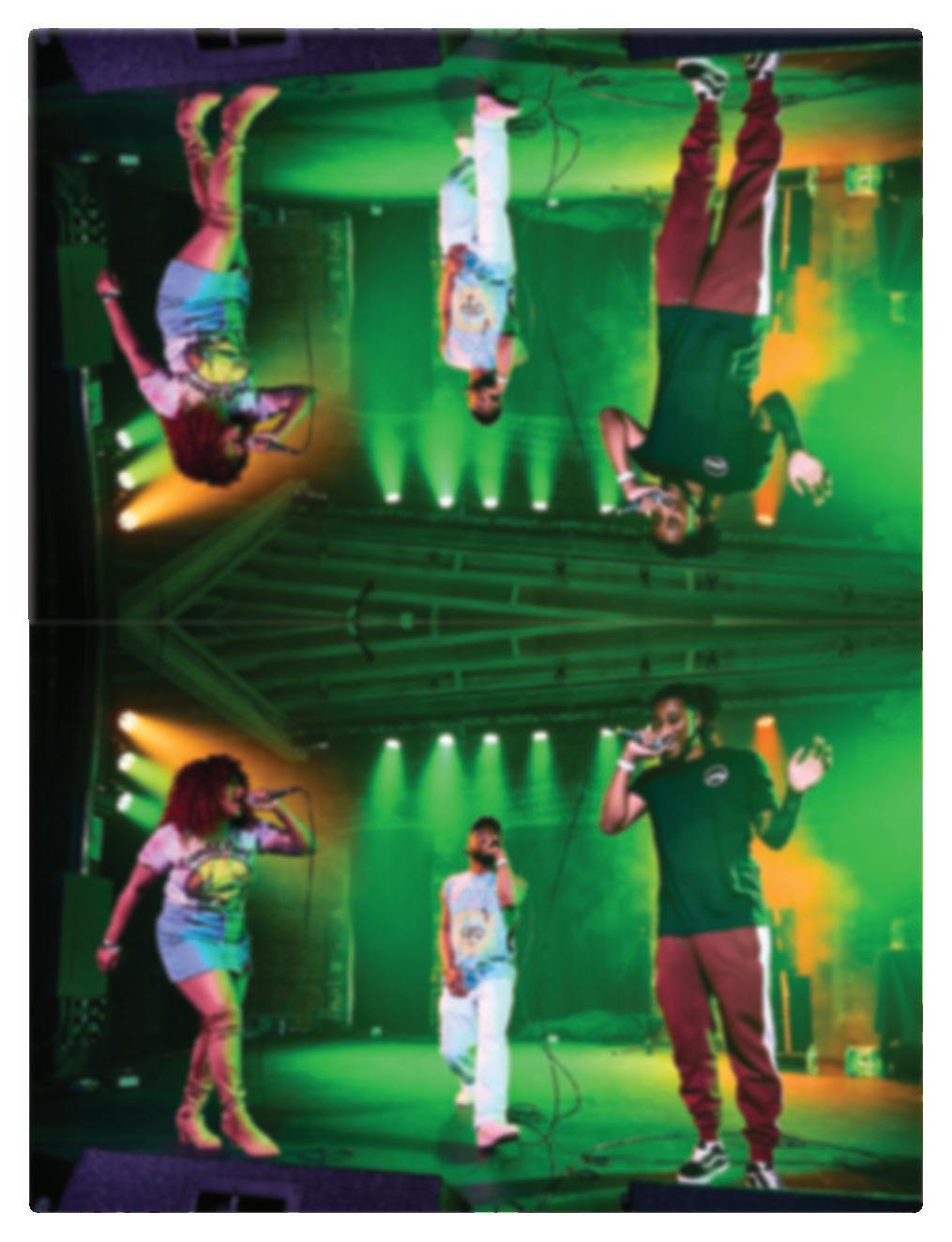








Words by Taylor Brown & photos by Mitch Wiisanen
Jacksonville Beach is welcoming a new endurance shop, Neutral Service, projected to open mid-August. This retailer has a unique vision, aiming to bring a differentiated experience to the area unlike any other cyclist shop.
Alex Brown, co-owner of Neutral Service, expressed, “There hasn’t been a new entrant into the cycling or endurance sports sector in Jacksonville for quite some time, so we’re excited to breathe some new life to the community.”
The concept is to focus on fostering a community while providing superior service, filling the void in the marketplace for reliable expertise in service, selection, and performance.
“Essentially, we are looking to create a new “home” for cyclists and endurance athletes (runners, triathletes, swimmers, etc). We will be a full-service bike shop but also a shop for a suite of high-value, story-focused brands and products that have been tried and tested to perform regardless of what level you compete at. Furthermore, our shop will house a full-service coffee and beer and wine bar that adheres to our commitment of excellence,” Brown explained.
Neutral Service draws inspiration from European culture’s welcoming, aspirational, and approachable energy toward endurance sports. At its core is inclusivity, promising to cater to beginners with the same attention and support as avid enthusiasts. Their mantra, “For Athletes on the course,” embodies their commitment to helping all athletes on their journey. Their name takes their dedication one step further, as it comes from the neutral service vehicles used during races that follow cyclists along the course providing whatever help they may need.
The team hopes to create new and engaging opportunities for the existing endurance sports community in Jacksonville. Brown mentioned some of the new ideas they will bring to life including regular weekly group rides and runs, larger organized ride/run events, events from brand partners and even potentially opportunities for racing. “In the hopes of being more inclusive, we hope to help be a key player in bringing together and unifying the broad cycling and endurance sports community across Northeast Florida,” he added.
Neutral Service’s commitment to satisfying a need in the community has motivated them to raise the bar for endurance shops to meet global standards. The shop’s unique floor plan, offering high-end products and services while crafting a space to encourage engagement, will be a great addition to the community.
The team is working rigorously to open the shop alongside the start of the La Vuelta a España (the Tour of Spain). To stay up to date with Neutral Service’s opening festivities, store updates, and community involvement, follow them on Instagram: @weareneutralservice.
Words by Mallory Pace
Your friend Lisa has been complaining about her partner Sam more often than usual, and the complaints are starting to sound more and more toxic than the average annoying boyfriend. You decide to tell Lisa that you think she should break up with Sam because you genuinely want what’s best for her and she’s not getting that from Sam. As expected, it’s not taken too well, but at least you’ve finally said it. Then you go home and spam-text the boy you’ve been in a “situationship” for the last several months who only gives you the time of day at his convenience. It’s totally different from Lisa’s situation, you tell yourself, but is it?
It’s one of the oldest sayings in the book, yet one that is seemingly the hardest to master: practicing what you preach. When we’re presented with a situation outside of ourselves, we’re quick to pass off our judgment as advice in hopes it’s well-received and acted upon, but when a similar situation appears in our own lives, we can’t seem to apply the same logic. Why is it so hard to internalize the advice we project? After all, we know ourselves the best, shouldn’t we be able to see the irony in what we’re doing?
We have trouble internalizing the guidance we offer to others because it’s easier to rationalize with our inner turmoil alone. In our heads, we tend to justify our or someone else’s actions toward us rather than surrender to the waving red flags because they don’t always appear red to us, only to everyone else. It’s as if our brains become color-blind to seeing situations for what they are when we don’t want to accept the truth. If we had a bird’s eye view into our own lives, I’m sure most of us would make the hard decisions much earlier. But we can’t always see what’s incredibly obvious to everyone else — which is exactly what makes practicing what you preach a complicated lesson to learn.
We experience a sense of cognitive dissonance when faced with a discrepancy between our beliefs and actions. Deep down, we may know one thing, but our actions portray the opposite. And in trying to rectify this inconsistency, we either change our actions to match our beliefs, or we choose to rationalize our thoughts until they match our behavior.
There’s a tricky path to navigate when it comes to giving advice. If you’re not careful, it can come across as condescending and egotistical, the exact opposite of what you’re aiming for. A rule of thumb I try to practice when someone comes to me with a situation is ask whether they’re looking for comfort or a solution. If they’re not actively seeking advice, don’t offer it — there’s nothing worse than being told how to fix something if that’s not necessarily what you’re looking to get out of a conversation. Sometimes we just want to rant and ramble about a situation without feeling the pressure to rectify it immediately. If you’re constantly pushing solutions every time someone comes to you to simply let off steam, they’ll eventually stop coming to you, and that defeats the purpose of being a friend.
Now if your friend is looking for a solution, choose your words wisely. Give them advice in the way you would want it to be given to you. Does that mean they’re going to follow it? Not necessarily, but advice isn’t always about what one needs or should be done; it’s about considering alternative perspectives until you’re able to come up with a solution on your own.
Advice, no matter your underlying intentions, is not always well-received.
We’ve all been on both sides of the conversation, but what we may be failing to recognize is that while giving advice gets easier, receiving it almost never does. But why is that?
We may push against accepting advice out of stubbornness or reluctance to accept the reality of a situation. Sometimes our egos take over and decide that we know what’s best and the other person has no clue what they’re talking about. And as we know, egos are stubborn. It can be hard to admit that someone else knows what’s best for you because that might mean you don’t, and that’s unsettling. We all want to feel in control of ourselves and the situations we come across, but we become more blinded to the truth when no one’s around to point it out. Hearing what we’re trying to avoid makes it real.
Advice is like supporting evidence: you try to collect as much as you can from different sources containing diverse, contradicting opinions and ways of thinking. Some are reliable and some aren’t, but you use it all to come to a conclusion on what to do next based on what you’ve gathered. No one individual’s piece of advice should determine your end-all-be-all, but rather as a collective means for denying or confirming what you thought to be true all along. Perhaps by changing our perspective on the purpose of advice, it might become less intimidating to accept a harsh reality.
Sometimes practicing what you preach can be as simple as telling someone they should drink more water as you’re downing your third coffee. Other times it’s more complex, like someone telling you to be more grateful after listening to them complain all day. You don’t have to give yourself a reality check every time you’re asked for advice, but before you make any judgments or assert any directives onto someone else, make sure to note whether you’re guilty of the same crime. But just because you’re in need of advice in your own life, doesn’t mean you don’t have something to offer.
We seek opinions and suggestions when faced with a crossroad, but hearing something that contradicts your own beliefs and feelings can elicit our fight or flight mode, leaving a choice of reacting either defensively or avoidantly.
Some people find that emphasizing the idea of practicing what you preach might not be all that profound as it potentially gives way to hypocrisy and self-disappointment. In a way, this holds some truth. But hypocrisy more closely aligns with another common phrase that I never quite understood: “Do as I say, not as I do.” That’s just about the most sanctimonious thing I’ve ever heard;
Why would I listen to what you have to say when you’re telling me you do the opposite? That’s blatant hypocrisy, and I try not to subscribe to that philosophy of thinking.
There’s also an argument that the saying should be reversed: only preach what you practice. This of course makes complete sense — to avoid hypocrisy, you should refrain from spewing advice that you also could benefit from. But to practice what you preach holds a deeper perspective in bettering yourself as a person, partner and friend. When it becomes a conscious thought in your day-to-day life, you learn self-awareness and metacognition, which allows you to analyze and understand your own ways of thinking.
By learning how to take your own advice, you learn to trust yourself. The guidance you offer to others shouldn’t end at your lips but, instead, be taken a step further and turned inward. As you learn to internalize the message and intention you’re aiming to give someone else, you can begin to build a strong foundation of identity and morality. When you give someone advice, it’s because you want what’s best for them. So if you apply the same logic to your own life and way of thinking, the perspective shifts.
[Allow me to preach a piece of advice that I’ve never practiced (but hopefully will now), the next time you’re faced with a problem. Try shifting the perspective as if it were your best friend going through it. Take everything you think and feel about the situation, including the behaviors shown, and try writing a letter or an email expressing your concern. Write it out in the way that you would if it was actually going to them with the goal that they will listen, understand and hopefully take your advice in the end. It doesn’t mean you may come to a conclusion with your own problem, but shifting the perspective on it allows you to see some things more clearly.]
Practicing what you preach is less about hypocrisy and more about trusting yourself to make the right decisions. It’s certainly easier said than done, but it’s about growing as a person. There’s a world of self-awareness to be discovered, which can be uncomfortable at times, but it’s something you must practice and consciously choose to act on. It’s a skill to be mastered, an ideal to be fostered and an art to be crafted.






“Seven hundred percent.”
The statistic, in fact, is 750%. However, in the haze of shock and confusion resulting from the chokehold my husband had me in, the exact figure eluded me. The bewildering statement did momentarily distract him.
Eerily enough, I had read a comment on a Reddit thread earlier that day that suddenly manifested during my panic. It said that a person involved in a domestic violence attack of strangulation is more than 750% more likely to be killed by their offender within a year. The statistic is part of a report by the National Library of Medicine (NIM) about non-fatal strangulation as a risk factor for the homicide of women.
Incidentally, those numbers shone like a cheap neon sign in a bizarre clearing of the cloud of fear. And when he decided to release me, it was the only thing I could think to say.
Of course, this was a particularly strange declaration to him, given the circumstances. It didn’t take long for him to recover, unfortunately.
These weren’t, however, my final words. Far from it.
Only later, when I found myself very alone, scrambling to put the pieces of my life back together and failing miserably, did I turn to music. I am not a performer, by any means, but there was something intrinsically peaceful about how the air filled around me with notes and noise so loud my brain finally opted for a break. Going to concerts, where the air becomes thick with sound, felt like medicine.
I soon met singer/songwriter Elyse Berlin, who telepathically tuned into my distraught state like an emotional swami for survivors and asked me if I wanted a hug. I did. In that group embrace of women, I fell apart sobbing while feeling slightly concerned I looked utterly unhinged. More than that, however, was one giant, overwhelming, awe-inspiring sense of relief.
Soon after, Berlin invited me to Sad Girl Happy Hour, an event she performed at.
Sad Girl Happy Hour is a collective of all-female musicians. Of course, men are allowed to attend the show, even featured in bands; however, the primary songwriter has to be a woman in the band to perform at the event. The show is the love child of local musician Megan McKenzie, who started Sad Girl as a safe space for overlooked women artists in a male-dominated music industry.
“I quit music for 10 years,” McKenzie said. “It was partially because of sexism. In mainstream rock music at the time, there weren’t many women. I was the only woman (at an event) that was not someone’s girlfriend. I remember thinking that there was no space for me here. It felt like I had to fight six times as hard.”
During her stint in Tallahassee as a young performer, McKenzie was told by
male band members to lose weight. She was referred to as a “little lady.” She was offered a recording in exchange for sex, and when she said no, he refused to work with her. Rather than give up, McKenzie created a space where women musicians could offer the support she felt she didn’t have.
Sad Girl Happy Hour has a rotation of musicians on its circuit. Performances often include McKenzie, Elyse Berlin, Jessica Hope, Ayron Moleen, and Tori Nance. She hopes the event will provide not only a place for women to express themselves freely but also offer mentorship to more novice performers. Before McKenzie performs “Cold Cruel Water,” she often delivers a trigger warning. The song is about her experience of being raped. In it, she references how she kept changing the sheets of her bed, washing them repeatedly after the assault.
“I felt violated,” McKenzie said. “I don’t like using the word dirty, but that was kind of how I felt, even though I don’t think I was.”
According to McKenzie, this line has particularly resonated with women who’ve suffered sexual assault. Ritualized cleansing as a processing behavior is typical among people who’ve experienced recent sexual trauma. On more than one occasion, she’s been approached after a show by women who’ve recognized themselves in her music.
Gail Patin, CEO of Hubbard House in Jacksonville, said support groups offer women the ability to interact with others who have similar experiences and are at different stages of recovery. Studies on group therapy have shown these communities help reduce feelings of isolation and increase empowerment and validation among women with trauma.
Validation is one of the many ways women heal from violence. According to Patin, however, trauma never leaves. Women do, however, learn to live with it. Additionally, she believes that music, coupled with validation, becomes an even more powerful tool during the recovery process — not just for those making it but for those listening to it.
“One good thing about music, when it hits, you feel no pain,” said Bob Marley famously in “Trench Town Rock.” It’s no surprise a correlation exists between music and healing. Most of us feel good listening to it, regardless of our emotional state. But for the many who are suffering, music can provide a healthy relief from mental distress.
After 15 years of emotional, sexual and eventually physically violent abuse during my marriage, I felt relief when I left the near-constant panic of being on the verge of getting hurt.
This alleviation was palpable. However, as Patin noted, one does not simply walk away from trauma.
Between crushing depression, new-found anxiety attacks and horrific, unrelenting flashbacks, I found myself at a lot of live music.
According to Patin, when stories of shared trauma are coupled with music, it stimulates more areas of the brain, which aids in the healing process. At Hubbard House, art and music therapies are utilized in a holistic recovery process.
Neurologists have found that humans register sound in the limbic system. This system is the same neural network of the brain that regulates emotions, memory, motivation and behavior. Good or bad, the recollection of memories and feelings becomes easily activated. It’s through this link many scientists think music therapy has been effective with trauma.
Specifically, however, how music affects the brain of those with post-traumatic stress is a burgeoning field of clinical study. According to an analysis of music on PTSD by the National Institutes of Heath (NIH), there is a correlation between community building, emotion regulation, increased pleasure and anxiety reduction with music therapy’s efficacy.
“When I wrote the song ‘Gray,’ it was extremely difficult to sing the first time,” said Sad Girl Happy Hour artist Elyse Berlin. “I wrote it because my abuser kept trying to come to my performances. He came to provoke me. I had to have a plan when he came to my safe spaces. And music is my safe space.” Berlin’s song “Gray” is about her past abusive relationship, explicitly dealing with rape. Not able to keep her abuser from showing up at public performances, she knew she could at least shame him. Writing it, she imagined confronting him.
“Everyone will know I am singing about you and what you did,” she would say.
She has never reported her abuse and has yet to use “Gray” against her abuser. But she could. And knowing that helps. Additionally, the act of writing and speaking about her trauma helps her process it.
“I’ve had friends tell me it’s unhealthy to sing these traumatizing songs,” Berlin said. “I disagree. For me, they start as difficult to sing because I’m working through these horrific events. Eventually, it turns into an empowering statement. When I’m singing the words, I think, ‘That’s how you used to feel.’”
According to the Department of Justice, only 310 out of every 1,000 sexual assaults are reported to the police.
And according to the National Domestic Violence Hotline, over 1 in 3 women in the U.S. have experienced rape, physical violence and/or stalking by an intimate partner in their lifetime. Additionally, about 70% of domestic violence is never reported to the police. Given the profound prevalence and the likelihood of those reporting it, it gives reason why many women aren’t talking about their trauma.
It’s well known that domestic violence happens behind closed doors. Often, women do not want to file a report because of the experience, or they blame themselves.
Mostly, they do not think it’s helpful to report and, if they did, how that reaction may negatively impact them.
One method women can use to speak safely about their experiences is through the veil of art. It creates a dynamic way to approach feelings and destigmatizes traumatic events. And when hearing it, other women find they aren’t alone.
“I write these songs both for myself and for people to hear it,” Berlin said. “When I’m writing, I’m thinking, I don’t want other women to get hurt. I don’t want other women to go through what I went through.”
Sad Girl Happy Hour may be one of dozens of unconventional ways women like myself have found solace in unstructured, nonclinical settings. It’s allowed me to connect with a community of women similar to me that I would otherwise not have. They are strong women that give me hope. Additionally, the most dangerous place I found myself was alone. Isolation was more dangerous, at times, than my marriage.
Personally, however, I don’t believe I am a statistic. I don’t feel like a survivor, either. I sure as hell am not part of that 750%. I have, however, found I am not alone. And I’m not scared anymore, either.
If you or anyone you know is experiencing domestic violence, the Hubbard House has a 24/7 hotline to call and speak to someone. You can call (904) 354-3114 or text (904) 210-3698.
Additionally, Sad Girl Happy Hour will take place next on Oct. 18 at at The Walrus, if you just want to hear some music.
Lastly, please know that you’re so much stronger than you think. I know this because I am, too. We all are.






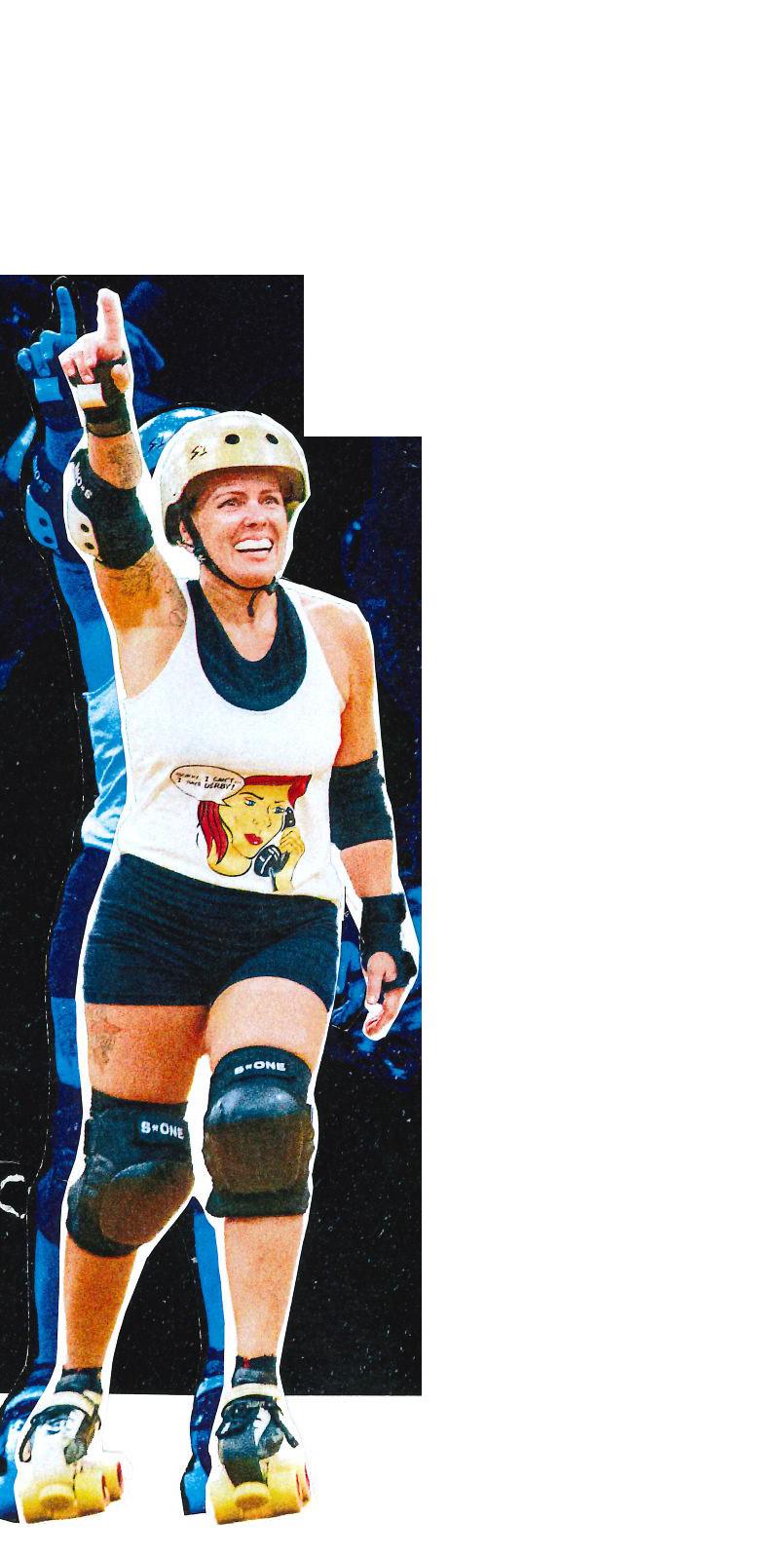

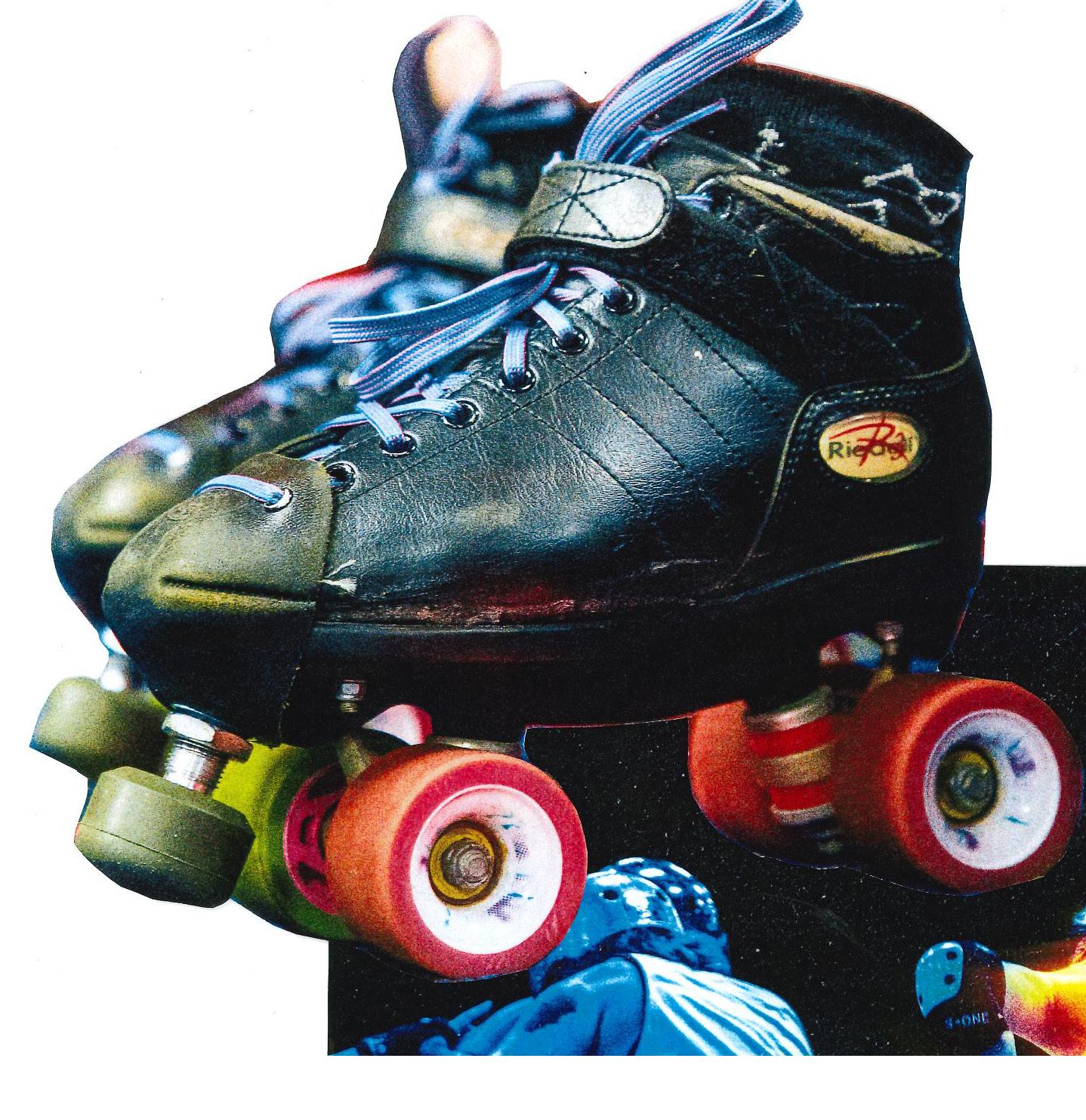

The clatter of wheels on polished wood echoes through the rink, mingling with the chatter of excited spectators and the focused voices of teammates finalizing their game plans. Then, the referee’s whistle cuts through the noise, signaling the start of the first jam. While some things have changed since roller derby first took to the rinks in the 1930s, the strong sense of community and sisterhood it fosters remains unchanged. This is especially true for Jacksonville’s very own league.
We have Leo Seltzer, a Chicago-based walkathon promoter from the ’30s to thank for the full-contact sport of roller derby. When Seltzer was looking for something a bit more exciting than endurance races to entertain the Depression-era crowd, he came across an article that stated that more than 90 percent of Americans had roller skated at least once in their life. That’s when the lightbulb went off, and Seltzer took his races on the track to races in the rink.
On Aug. 13, 1935 at the Chicago Coliseum, the first transcontinental derby race was held. According to Keith Coppage’s “Roller Derby to RollerJam: The Authorized Story of an Unauthorized Sport,” about 20,000 people filled the coliseum to watch two-person teams, each consisting of a man and a woman, skate 57,000 laps around a flat track. Naturally, the winner was determined by whichever team completed the race first. But around 1937, Seltzer, who was always looking for the next best thing, worried the endless laps were becoming monotonous. That is when he turned to sports writer Damon Runyon. Runyon, captivated by the fails and falls seen in the races, suggested that Seltzer lean into the more aggressive role of the sport. Thus, together they came up with what we know of roller derby today.
As most trends tend to ebb and flow in popularity, the same goes for roller derby. By 1949 the game had become a nationwide sensation. By 1953, interest dwindled. A couple of years later, in 1959, Seltzer put his son Jerry in charge to oversee the sport. With a younger hand at the reins, Jerry took roller derby to a new level and to a new stage — television stations. Slowly, the sport regained its popularity, and by 1971, the crowd reached heights similar to when it first entered the rink.
What about roller derby made it so popular, you may be asking. Well, according to “The New York Times” article “The Long and Surprising History of Roller Derby,” Seltzer “bragged about the equity of the sport from the beginning” and told the “Times” that “this is the only American sport ever created where men and women are equal … the women can see themselves in the roller derby.”
Under son Jerry’s roller derby reign, the sport leaned into theatrics and became more about entertaining the crowd than it was about the money. Jerry even sold the rights to the International Roller Derby League to Roller Games, in which they staged a bout at the Madison Square Garden. But by 1975 the beloved sport came to yet another screeching stop.
Despite meager attempts at bringing the sport back to its limelight throughout the ’80s and ’90s, it wasn’t until a group of women out of Austin, Texas rejuvenated the sport in 2001. This time, they kept the traditional aspects of the sport but added a feminist twist. To this day the sport continues to be known for its hand in women’s empowerment and creative, pun-filled names — a tradition that calls back to the Austin drag scene of that time.
So, what exactly is roller derby? If you’ve seen the 2009 film “Whip It,” throw out everything you think you learned from the film about the sport out the window. Well, not everything, there are some truths in the film, but one of the biggest misconceptions about the sport is how violent it is.
While it is a full-contact sport and was once as vicious as portrayed in the film, once the Women’s Flat Track Derby Association (WFTDA) became the sports governing body in the early 2000s, new rules and regulations were implemented.
In simplest terms, the game is split into two 30-minute halves or matches called bouts that consist of two-minute jams. Each team fills the roles of one jammer and four blockers on the flat oval-shaped track. The jammer (marked by a star on their helmet) is the skater tasked with scoring points for the team. Blockers, as implied by the name, have the job of blocking the opposing team’s jammer from getting through. One of the blockers is known as the pivot (marked by a line on their helmet) and sets the pace and helps control the pack. The pivot also has the opportunity to wear the helmet with a star and play as the jammer.
Once the referee blows the whistle the jam begins and the jammer(s) begin jamming the pack. The initial pass dictates the lead jammer and the second jammer — no points are won in this initial pass. The lead jammer is the first jammer to legally get out of the pack and is allowed to call off the first jam at any time before the two minutes is up, indicated by hitting their hips with their hands repetitively. After the initial pass, jammers win a point for each opposing blocker they pass. Blockers can block opposing jammers by creating a wall, slowing them down positionally, leading them out of bounds or knocking them out of bounds. Roller derby is one of the only sports where one is playing both defense and offense at the same time.
Remember what I said about throwing everything you saw in “Whip It” out the window? This is especially true when it comes to what type of contact is and isn’t allowed. As a good base, no contact is allowed above the shoulders, below the knees or down the center of the back, meaning no punches to the head or tripping. Players are only allowed contact on the front of the body and the sides. While fights do happen, they are rare and typically result in the expulsion of any skaters involved.
The jam is up once either the lead jammer calls it off or the two minutes expire. The process is repeated for the next five jams with new line-ups. The team with the most points at the end of the hour wins.
In March of 2006 the Jacksonville Roller Derby (JRD) league, the first and only of its kind in the Bold City, was founded. The league is made up of over 70 skaters and is split into three teams that compete on different skill levels. The travel teams are the J Villains (C team), River City Rat Pack (B team), and the New Jax City Rollers (WFTDA All Stars). The home teams consist of the Duval Derby Dames, First Coast Fatales and the Bold City Bombshells. All members are volunteers who play because they love the sport.
In 2010, JRD was accepted into WFTDA and has continued to rise in ranks and experience, reaching top 10 in the world in 2018.
Head coach Melissa Ludington (known as Deviant Behavior in the rink) has been a part of the league since its inception in 2006. After being asked if they would be interested to join the team at one of the after parties by a friend, Ludington showed up to the next practice and never looked back.
Being with the team for so long, it only makes sense that Ludington took on a coaching role.
“I have been with the league for so many years that I have seen the sport grow and evolve, and I love being a part of that growth. I believe my experience is valuable to the athletes in their training. I am motivated to coach when I witness a seasoned athlete learn a new skill or a new athlete conquer a skill that they have been working very hard towards,” Ludington shared. “It starts with the coach. You have to believe in what you are coaching and foster the environment you want to see. Remind the athletes they require each other to be successful in a team sport. My favorite quote is ‘Play for the name on the front of your jersey, not the name on the back.’”
Lizz Zieschang, known as Lil’ Lass Kicker in the rink, has been a part of the New Jax City Rollers All-Star team for about six seasons and, like most skaters, has had to learn how to balance having a taxing full-time job with making time for her passion.
“We all have complex lives. We’re mothers, daughters, nurses, teachers, and scientists. We even have a gold medal Olympian. We celebrate all of each other’s achievements, both on and off the track. We are unpaid and all have to balance this with our normal jobs and lives. We do it for the love of the sport and our love for each other,” Zieschang shared. “I am an archaeologist, conducting both terrestrial and underwater archaeology. I have to balance roller derby with my job, which can be demanding, but by traveling, I have the opportunity to skate with other leagues and make new friends. I have been playing roller derby for six seasons, so at this point, it really is a part of my lifestyle. I don’t think something is a hobby anymore if you think about it every day!”
Each skater and member has an important role to play within the league. As Ludington put it, “It is beautiful to be a part of a sport where people of all body shapes and sizes have a role. The various positions and strategies allow for the use of every athlete. Even people who do not play the sport are part of the family.” And the same goes for the role the community plays within the sport.
Now what if I told you that not only does Jacksonville have their very own roller derby league but that our league is one of the top 20 in the world.
“Our community plays a crucial role in supporting our roller derby team. They show up to our games, cheer us on, and spread the word about our events, which boosts our morale and helps us grow,” New Jax City Roller team captain Stephanie Bratz, said.
“We all have complex lives. We’re mothers, daughters, nurses, teachers, and scientists. We even have a gold medal Olympian. We celebrate all of each others achievements, both on and off the track. We are unpaid and all have to balance this with our normal jobs and lives. We do
shared.
“We also collaborate with local charities and organizations, using our platform to give back and strengthen our ties with the community.”
Every year the Jacksonville Roller Derby league participates in community-based charity events and is one of the top fundraisers for the city. Many of the games the league hosts, raises money for Movember’s Prostate Cancer Awareness, the Marine’s Toys 4 Tots drive, V for Victory and many more. The team strongly believes in giving back to the community that has continuously shown up for them.
But what I found to be the most touching aspect of roller derby and of our skaters here in Jacksonville was the overwhelming sense of camaraderie and friendship. Even while being a full-contact sport, the community fostered within the rink extends to relationships outside of the rink.
“Man, where do I start? I have so much admiration for Snot, Fancy, Deviant, Stephanie Bratz and Takia. They each bring something different to our league in different capacities, but all are an integral part of how Jax became Jax,” River City Rat Pack skater Savannah Wofford-Beaty (aka Snarly Quinn) expressed. “There has never been a practice or game I’ve regretted skating in, and that has everything to do with those I skate alongside with. My teammates are the best part of my Sundays (practice days).”
And in a male-dominated field, it’s always inspiring to see women lift eachother up and be held in the same regard as the opposite sex. It really is all about equality in and out of the rink. As Margot Atwell, the author of “Derby Life: A Crash Course in the Incredible Sport of Roller Derby,” shared with “The New York Times,” “Feminism is in the DNA of the sport. And having a space that centers female and gender-expansive aggression is really important.”
“I’m lucky enough to have my biggest role models on my own team,” Zieschang said. “Snot Rocket Science is a pillar in the roller derby community and has so much knowledge about the game. Jamsterella is one of the best jammers in the world. Baybee is a gold medal Olympian in speed [ice] skating and just all-around amazing athlete. Atomic Mel Down has incredible offense on the track. Murph and Izzy are amazing triple threats. Coco is one of the best blockers out there. I have so many teammates that are also role models and I’m so blessed to have that.”
Interested in catching the next bout? Head to jacksonvillerollerderby.com for the full schedule and more information.

JANUARY





“It’s just a blank log, but it’s in there, and all I’m doing is showing the face that’s sitting inside of it.” — Mike Scroggie
The intricate carvings, bold colors and distinct designs of tiki figures add a captivating touch to any space, but they are so much more than home decor. Traditional tikis, usually made of wood or stone, originated in Polynesian culture, particularly within Maori traditions of New Zealand, Hawaii and other Pacific Islands. These carvings — often depicting deities, ancestors or mythological figures — were deeply valued for their spiritual significance, acting as protectors or bridges between the physical and spiritual worlds.
In the mid-20th century, the tiki concept found its way into Western culture through the tiki bar movement, which started in the United States. It combined Polynesian-inspired décor with exotic cocktails—an all-American twist on tradition.
Today, tiki carvings are widespread across the United States with Florida being a hotspot. In Jacksonville and St. Augustine, one artist, Mike Scroggie, has gained recognition for his unique creations. While working at Jax Palm Trees, he found himself with extra materials and a deep appreciation for tiki art. Much like others who stumble upon a new hobby, Scroggie spent countless hours scouring the internet teaching himself the craft.
“I liked a lot of what I’d seen. I admired a lot of the artists,” Scroggie shared. “Being in the palm tree business, I had availability to the materials and wanted to try my hand at it, which didn’t turn out like the pictures or the people I admired at first. And kind of created my own style.”
Art comes in many shapes and sizes, with a wide range of forms and mediums to explore. While we often think of paintings when we picture art, sculpting offers a unique and powerful way to express creativity. It turns ideas into three-dimensional forms, letting viewers experience art from different perspectives. By working with materials like stone, wood, metal, or clay, artists bring their visions to life. Sculpting demands both technical skill and a deep understanding of form, space and texture.
Scroggie has been sculpting tikis for over 10 years, and each piece he creates teaches him something new about the art. Early on, he drew inspiration from other artists, focusing on elements he admired—whether it was a headdress, a smile, or the tilt of the eyes. He’d take what he loved from these works and put his own spin on it, blending each influence into his own unique style. Over time, Scroggie realized that even with a clear vision of his tiki, everything shifts once he’s face-to-face with the wood.
“Sometimes the piece of wood you have in front of you changes everything you thought you had in mind,” Scroggie explained.
He starts by carefully inspecting the wood, ensuring there are no flaws or rotting sections. His process begins with the nose, setting it as the central point to guarantee that the face will be both centered and symmetrical. After establishing this foundation, he begins etching free-formed lines to outline the basic shapes of the eyes and mouth. At this point, he refers to it as looking like “something you etched out with a crayon,” but from there the tiki begins coming to life. Rough lines turn into facial features, and crayon etches turn fine paint brush strokes.
With each tiki, Scroggie reaches a moment where he must decide: continue tweaking and adding more detail or accept the piece as it is. As a perfectionist, it’s tempting to believe that there’s always room for improvement and never be fully satisfied. But over time, Scroggie learned that perfection is elusive. He could endlessly critique his work or choose to appreciate the art he’s created.
“You start seeing this thing in front of you and realize the changes you can make or you can be happy with what sits in front of you,” Scroggie shared. “Sometimes you want to make it a little more expressive than what you originally thought. But happy mistakes create some of the greatest pieces I have ever put forth, the ones I am happiest with myself.”
Although Scroggie isn’t of Polynesian heritage, he’s gained a deep understanding of tiki culture through his years of practice. He’s developed his own style, which he calls Florida Tiki. This style is known for its dropped eyes and often avoids the big, cheesy Polynesian smiles seen in traditional tikis. Scroggie’s approach blends his appreciation for the culture with his personal touch.
“I consider myself a nerd in two things: palm trees and tikis and that does fall into the Polynesian culture and where they come from, the gods, how it was created and the representation of each tiki,” Scroggie explained. “Certain tikis have meanings like pineapple means hospitality and open mouth means no fear. I’ve delved quite a bit. I go to events around the state or anywhere that I can and I frequent tiki bars throughout the States, which isn’t, you know, true Polynesian culture, but it’s part of the game that I’m in.”
Scroggie has started experimenting with new mediums for his Tikis, moving beyond the cabbage palm he usually works with. One of his latest projects involves carving half a Tiki’s face into an old surfboard. But that’s just the start—he is constantly exploring new ways to push his creativity even further.
You can find Scroggie and his tikis at the St Augustine Amphitheater Farmers Market every Saturday or on Instagram @ showmeyourtikis.
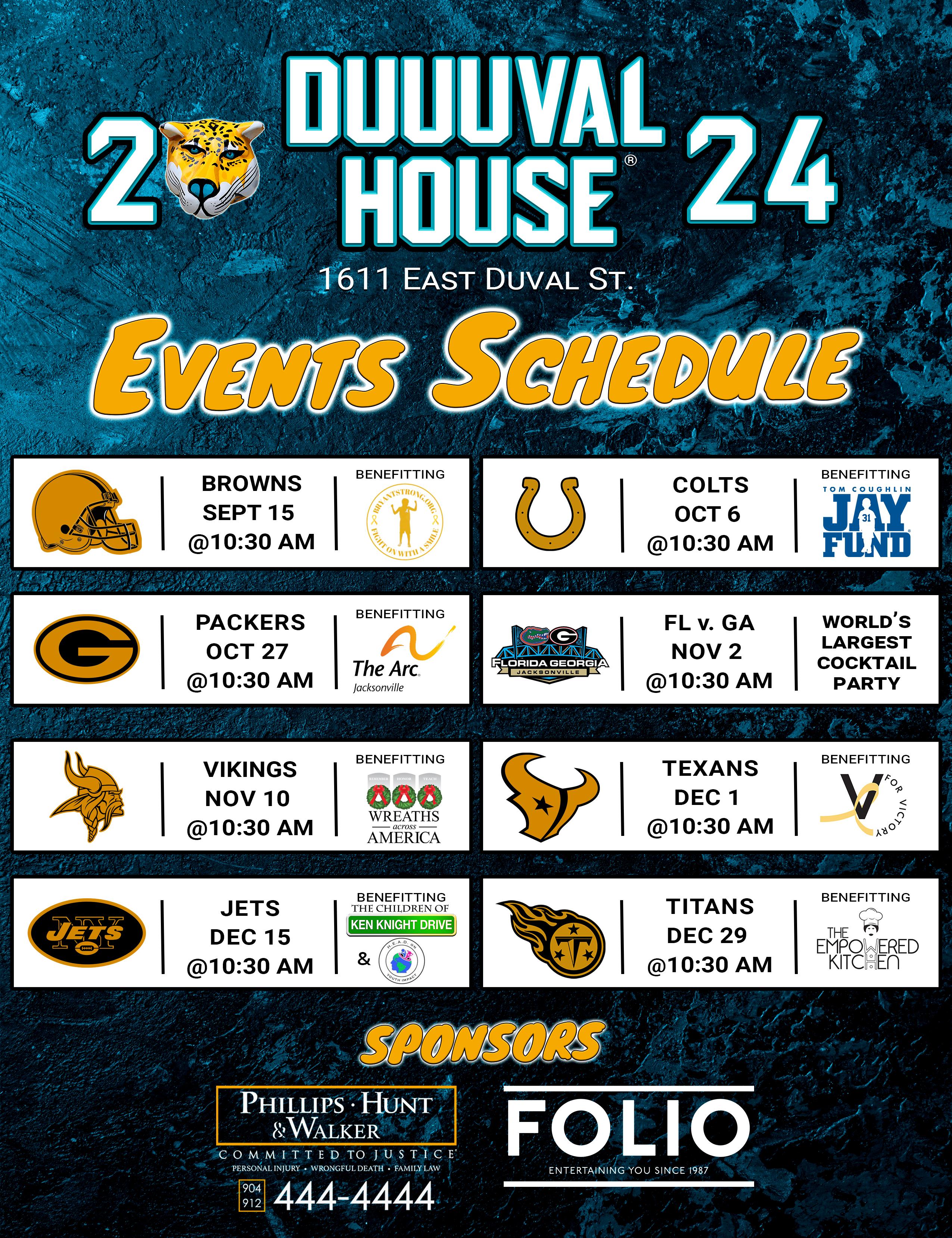
Words & photos by Mallory Pace
In the northside depths of Jacksonville, tucked away on a road less traveled by, is home to some of the most exotic and beautiful animals the world has to offer. Each animal was rescued from very serious and dangerous situations from all around the world, but their health, safety and comfort becomes a priority at their new forever home. From lions to tigers to a bear , Catty Shack Ranch Wildlife Sanctuary proudly rescues, heals and protects some of nature’s most beloved wildlife, right in our very backyard.
Catty Shack Ranch director Curt LoGiudice began working with exotic animals in 1982 after spending time training police dogs. Twelve years and two state and federal licenses later, the Florida Panther Project asked LoGiudice to be their representative in Jacksonville for educational presentations about endangered panthers. In 2000, Catty Shack Ranch became a nonprofit organization, which it still functions as today. The core values of Catty Shack Ranch are centered around a no breeding, no selling, no trading and no buying policy to help ensure every animal that is given refuge at the sanctuary will not be jeopardized by irresponsible development.
On the weekends, visitors can watch and gawk as some of the animals are fed dinner — pounds of delicious raw chicken. Watching a tiger crunch down on raw chicken, bones and all, is something you don’t get to see many times in life, if at all. The friendly staff, the learning opportunities and the vast beauty of wildlife to be experienced at Catty Shack is exactly what earned them the No. 1 spot (of 157) on TripAdvisor’s things to do in Jacksonville.
In addition to live feedings, Catty Shack Ranch has been a strong resource in educating people about the plight of these animals in the wild and the importance of maintaining their safety since becoming open to the public in 2004. They give educational tours to schools and summer camps year-round, aiming to educate the next generation on the beauty and significance of wildlife. Stephen Laquintano has been the education coordinator at Catty Shack for about six years, running the field trips and other educational tours.
“Kids can sit in the classroom and learn about it, sure, but here they’ll get closer to a tiger than they’ve ever been in their entire life,” he said. “And that can spark something that can grow in them a bit later.”
“Plus, the kids get to see things that they would never get to see at other places, and the tigers like seeing them, too.”
Each animal the organization takes in finds their forever home at Catty Shack, becoming a permanent part of a family that does anything and everything for that animal’s wellbeing. Laquintano said that once they take an animal in, a commitment is made to take care of it for the rest of its life by receiving the best care Catty Shack can provide.
There are various on-site crews that assist in and provide medical care, daily feedings and other services, but the real bulk of the labor comes from the
volunteers who regularly take care of the animals, Laquintano said. These volunteers provide consistent and intentional care like making enrichment activities, running day-to-day operations, cleaning and prepping food, among other duties. In fact, it wasn’t until 2014 that Catty Shack hired its first paid employees, a telling sign of both their success as a rescue organization and of their dedication to putting their animals first.
The majority of their animals come from places that can’t take care of them anymore, like areas that were hit especially hard by Hurricane Irma, Laquintano explained. Others come from illegal breeding operations, and some were federal confiscations, meaning places that were shut down by the government for not taking care of the animals.
Several of the smaller animals, like foxes, caracals and servals, were rescued from being personal pets, which Laquintano stressed: do not make good house pets.
“Even with house cats,” Laquintano said, “They’ve lived with humans for thousands of years, and they’re not even fully domesticated. So, if you take a serval, whose great, great grandfather was living on an African savanna, you don’t have a domesticated animal.”
There are currently three extinct subspecies of tigers and six living subspecies, including Siberian, which most of Catty Shack’s residents are. In the wild, tigers typically live up to 15 years, but can live up to between 20 and 25 in captivity. According to their website, wild tigers average a large kill about once per week, and in a single night, they can eat as much as 60 pounds of meat if they strike it big. For comparison, the average meal is typically up to 40 pounds.
Catty Shack tigers eat roughly 10-15 pounds of food five to six nights a week and follow the USDA guidelines for feedings according to their body weight. Their diets are made according to their veterinarians’ nutritional requirements to maintain a healthy and balanced lifestyle.
“As few as 3,200 tigers still exist in the wild and populations are at a growing risk due to human encroachment, habitat loss and poaching,” their website states.

“In captivity, there are an estimated 5,000 tigers in the U.S. alone, though only a small portion of that 5,000 exist in zoos or other sanctuaries.”
Lions are the only big cat that prefer to live in social groups or prides, which can be as small as three and as big as 40 animals, and typically consist of related females and one to three males. They can become very affectionate toward their pride mates, showing affection by touching, licking and rubbing each other. Within the pride, the male lion is usually responsible for protection, while the females hunt and care-give.
Lions typically live between 12 to 15 years in the wild but can greatly surpass that in captivity to live until 20 to 25. It is estimated that the population of African lions is around 21,000 — roughly half of what it was in 1950 — and it is considered a vulnerable species. The Asian lion population only has about less than 300 left, making it endangered.
“Habitat destruction and encroachment of humans is a real threat to these animals, along with distemper, which is a disease passed on to them from dogs in nearby villages,” Catty Shack website states. “Hunting of these animals also exists, especially near farming communities.”
But at Catty Shack, these animals tend to exceed their life expectancies, due to the consistent and intentional care they receive. Their on-site veterinarian and medical facility ensures that the animals can receive immediate attention, including surgery and routine checks as needed, as well as providing them with daily medication and vitamins for their individual needs. The proceeds from their next fundraiser will go toward the updated construction of the medical facility.
Not only do the staff and volunteers spend time with the animals and create enrichment activities to promote their mental stimulation, but their diet plays a large role in health levels. A roughly 35-by-48- foot freezer sits on site, containing thousands and thousands of pounds of meat and food products. In just a single night, Catty Shack will go through about 500 pounds of food, so the necessary precautions and preparations need to be taken at all times.
With the consistent help of the staff and volunteers, these animals have a routine feeding, so they never have to worry about going hungry. Some of them don’t even appear all that eager when food is brought around because they’ve learned a new level of food security.
Currently, Catty Shack is the forever home to two lions, 15 tigers and one bear. Plus a leopard, cougar, caracal, bobcat and coatimundis. Oh, and two servals, two foxes, two horses and an unspecified number of lynxes, pumas, panthers, mountain lions, etc.
There’s a degree of respect and trust to be earned when dealing with these animals, but the more time spent with them, a bond of sorts can form with certain animals. Like Laquintano said, the people at Catty Shack spend every day with the animals, they feed them, clean up after them, and notice when they’re not feeling well. At the same time, that level of respect includes never making direct contact.
“These are wild animals, and they have their own mindsets,” he said. “They’re not gonna run up and want you to scratch them, but that being said, you do form relationships.”
“T HE REASON w E DO IT IS BECAUSE THEY DESERVE I t,” HE SAID “T HEY ’ RE AMA z IN g ANIMALS . wE k NO w EACH OF THEM INDIVIDUALLY AND THEY DESERVE A g OOD LIFE .”
Like with Amara, a 13-year-old Siberian Tiger that arrived at Catty Shack at just a few months old with her litter mate, Misha. The two of them, along with three other cubs from another litter, came from a facility that could no longer support them. Laquintano described Amara’s big personality fondly, explaining that she comes up and greets her people while chuffing (the tiger version of a cat’s purr).
“She’s just a little bit neurotic, which only adds to her personality,” he said. “And who isn’t a little bit neurotic?”
Laquintano explained that unlike other animal facilities like zoos and such, Catty Shack isn’t necessarily interested in having any specific, best-looking or most exotic animals. They take all kinds of animals from all kinds of backgrounds and give them the same love, attention, enrichment and care because it’s what they deserve.
Providing the utmost care and love is their priority, which is reflected in their current renovations as they’re getting ready to expand and update some of the animals’ sanctuaries and habitats, like building new enclosures and pools. Their focus right now is on making sure their current animals can enjoy the best life possible.
“The reason we do it is because they deserve it,” Laquintano said. “They’re amazing animals. We know each of them individually, and they deserve a good life.”
Being a volunteer-driven organization isn’t easy, of course. Catty Shack runs and operates solely through donations, admission tickets and special events. The bottom line, Laquintano emphasized, is that the way Catty Shack functions, and the way they progress as a rescue mission is by having people from the community come and be a part of the team simply by showing up to enjoy the animals.
“We have the most friendly and engaging staff. When you come out to visit, you walk up to a volunteer or staff member, get them talking, and they make sure that you have a good time,” Laquintano said. “So come out and visit, engage with the staff and see the animals.”
Catty Shack is located at 1860 Starratt Road, and a scheduled list of events, hours and admission costs can be found on their website cattyshack.org. There you’ll also find other information on education, donations, adoptions and ways to support. The goals and mission behind Catty Shack are unlike any other animal exhibits, so support your local big cats and Jacksonville community by showing up to Catty Shack Ranch Wildlife Sanctuary. Purrr!
& photo by Amiyah Golden
The inquiry stands because the wonder of a time period considered “great” for some America plagues the minds of many.
Was it the time when women held no rights and couldn’t vote? Or when tribes of people were violently ejected from their homelands to produce free labor, endure physical and sexual assault, and be stripped of their rights? Or was it when “conquistadors” were praised for stealing land and ethnically cleansing groups of people?
Or is the phrase a war-cry for assimilation and coveted bigotry?
Now, there are a few claims of considerable wins in American history such as:
Roe v. Wade.
The 19th amendment.
The legalization of gay and interracial marriage.
Simone Biles becoming the most decorated gymnast in history… and many other accomplishments but each comes with as a necessary retort to prolonged oppression.
Having to armor up in a fight for your natural born rights seems to undercut the “greatness” of American democracy. And while progress has been made, there is no denying that the threat of repeal looms over the heads of many Americans due to the modern-day Conservative stance that is represented by Republican presidential nominee Donald Trump, creator of the slogan, “Make America Great Again.” In doing so, Trump has spearheaded a movement that has emboldened extremists to uncloak their leaden beliefs that hone true to the founding of this country.
For those who can’t neatly compartmentalize into the mold that was originally shaped for the successors of this country — white and male — it can be hard to find the optimism in the future plans lined up to aid in returning America back to its “values.” The same values that have historically displaced multiple minority groups, taken away women’s rights and upheld white American imperialism, while empowering Christian nationalism? (Oh, and the racism… can’t forget the racism.)
Project 2025 now serves as the tangible synopsis of future propositions that are at the ready for establishment if the Republican nominee is elected.
While Trump has denied his own involvement in Project 2025 by posting to his social media platform Truth Social stating, “I know nothing about Project 2025,” and “I have no idea who is behind it.” He was quoted speaking about the Heritage Foundation – the organization leading the endeavors – and its proposal at a dinner in 2022 where he affirmed the operation saying on NBC News, “This is a great group, and they’re going to lay the groundwork and detail plans for exactly what our movement will do and what your movement will do when the American people give us a colossal mandate to save America.”
While Paul Dans has stepped down as of July 2024 as the director of Project 2025, he served as chief of staff at the Office of Personnel Management during Trump’s term and former official Russell Vought was responsible for writing a “key” chapter in the spread. His interpersonal ties seem to continue to connect.
Via The Heritage Foundation’s website, they exist to “champion policy solutions that benefit all Americans.”
The sentiment seems to be there but the actualization of the implications of Project 2025 do not exist to benefit “ALL” Americans.
They also coin the term freedom as a dire obligation, but that freedom doesn’t seem (again) to apply to the majority.
The 900-page document is summed up to seven bullet-points according to the Project 2025 organization’s homepage, making it appear easily digestible and straightforward. Presented as necessary improvements to Make America Great Again it also serves as a direct threat to U.S. democracy.
According to the BBC, it “calls for the sacking of thousands of civil servants, expanding the power of the president, dismantling the Department of Education, sweeping tax cuts, a ban on pornography, halting sales of the abortion pill, and more.”
CBS also reported Project 2025 “lays out an overhaul of the federal government. The recommendations outlined in the sprawling plan reach every corner of the executive brand, from the Executive Office of the President to the Department of Homeland Security to the little-known Export-Import Bank.”

There are also rational proposals littered in the plan, but it doesn’t outweigh the proposed infringement of rights and benefits such as abortion, education, marital rights and more.
The document also “recommends the next secretary of Health and Human Services get rid of the Reproductive Healthcare Access Task Force… and create a pro-life task force to ensure that all of the department’s divisions seek to use their authority to promote the life and health of women and their unborn children.”
It also calls for the Food and Drug Administration (FDA) to reverse the approval of the abortion pill, mifepristone.
Another worrisome section, “The Family Agenda” suggests that the health and human services chief “proudly states that men and women are biological realities” and “married men and women are the ideal, natural family structure because all children have a right to be raised by the men and women who conceived them.”
The reinstating of the policy put into place by Trump during his term to ban transgender people from serving in the military is also mentioned.
These are just a few Conservative “suggestions” outlined in the lengthy document.
The June 2022 Supreme Court decision that overturned Roe v. Wade was just the bleak beginning of the reality of encroachment.
The realization that the minority in this country truly aren’t safe under the yearning of conservative American values became actualized; not that it’s a new threat by any means but the realization that rights could be so swiftly snatched turned convoluted fantasies into reality in the blink of an eye. With Supreme Court Justice Clarence Thomas even advising that the court should “reconsider” some of its past rulings such as same-sex relationships and marriages.
Religious dominance and superiority complexes give license to the current Republican fight to upheave civil rights that are deemed “unconstitutional” but who gets to determine when autonomy is impermissible or justified?
It can’t be “The Bible,” as the First Amendment’s Establishment Clause in the United States Constitution explicitly states that, “Congress shall make no law respecting an establishment of religion.”
While this is supposed law of the land, we have seen time and time again, where this clause was challenged such as McCreary County v. ACLU with two Kentucky counties arguing that the Ten Commandments are Kentucky’s “precedent legal code” and that the state legislature accepted Christ as the “Prince of Ethics.” While the 2005 Supreme Court ruled in a 5-4 against the county, it is a petrifying testament to the ability to hold power and curate legislation that is skewed to personal beliefs.
The Heritage Foundation’s website champions religious freedoms but it can be interpreted as solely with the alignment of one specific belief — Christianity.
In a report by Jay Alan Sekulow via The Heritage Foundation’s website, he focuses on the attack of religious freedoms:
“Politicians mock the faithful’s claims of religious conscience, while government entities and actors treat religious freedom and expression as obstacles to be overcome rather than as important values to protect. A crackdown that can be seen in a variety of different contexts ranging from employers or health care professionals being required to provide or facilitate abortions against the dictates of their faith.”
In a commentary column on The Heritage Foundation website by Hon. Edwin Meese III, former policy chair to former President Ronald Reagan, he stated, “To restore the American experiment in democratic self-government, religious believers need to redouble their civic efforts. For without our active participation in politics, the government will continue to trample on our rights,” adding that “Pastors can lead the way in motivating the faithful to wise stewardship of their citizenship responsibilities.”
Genuinely asking… How do Christian convictions trump (no pun intended) the overall well-being of the greater good?
A self-imposed religious stance on the morality of abortion, gay marriage or sovereignty does not belong in the government and the prospect of such under the guise of the urgent return to American “ideals.”
Late Senator Orrin Hatch of Utah shared his own bias with the idea that no decision “is more fundamental to human existence than the decision we make regarding our relationship to the Divine.” He followed up his statement with that no “act of government can be more intrusive or more invasive of individual autonomy and free will than the act of compelling a person to violate his or her sincerely held religious beliefs.”
Is this not hypocrisy at its best?
The concern of autonomy only seems to apply when the monotheistic belief is confronted.
Is the acceptance the same when a believing woman with the same religious beliefs decides to exercise her right to an abortion? Or when former President Barack Obama, who is Christian, supported the right to an abortion in 2013 stating that the looming concern of restriction would be, “to turn back the clock to policies more suited to the 1950s than the 21st century.” Countless Christians have supported the right to an abortion and other challenged rights regardless of their own beliefs. This only incites a growing hunger for power and a desire for a homogenic turn in the culture that is often left unchallenged due to the caterwaul of “theological attacks.”
Furthermore, if the beliefs of the Conservative party are truly under immense attack by the “liberal left” why does the majority choose to support someone who fails to reflect the same Christian values that they’re hellbent on upholding?
SCAN THE QR CODE TO READ THE REST OF THE STORY




















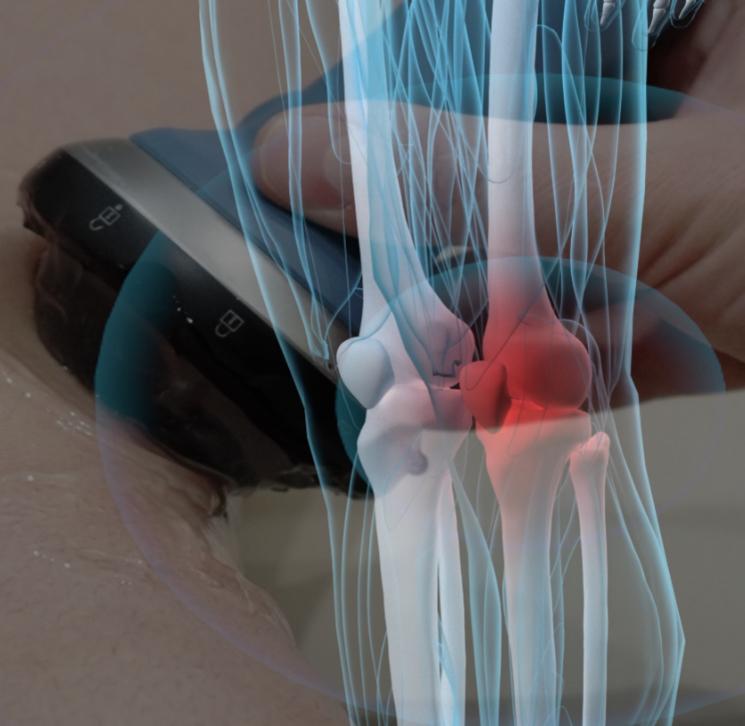


Dear Dumbs,
Thank you for the podcast and for the monthly article. It’s always a bright spot in my day.
I’m emailing you today because I have an issue with my boyfriend. We’ve lived together for a little over five years and he’s a good guy. One of his best qualities is that he accepts my 7-year- old as his own. He’s always there for her while the biological father is out of the picture.
The issue is he is very active on hookup sites. He sends explicit pictures, and he goes beyond flirting in his messages to them as well. When I asked him about all of this, he said he would never meet up with them and that he just likes the excitement of the chase.
Obviously this has really done a number on me and us as a couple. I want to leave him, but I’m fearful of how it might affect my daughter.
Any tips?
Thank you in advance.
Millie T.
Atlantic Beach
TERRY: Let me just say right upfront that I know I’m about to upset some people here. But it has to be said. The problem is that I have so many questions I need Millie to answer before I start taking off some heads.
SHARI: Can I guess?
TERRY : Like I have a choice.
SHARI: In your little Terry brain, you somehow think that this is all her fault.
TERRY: That’s kind of a reach. But she does have some responsibility here.
SHARI: I’m listening.
TERRY : In the dating process, there were some missed red flags.
SHARI: For example?
TERRY: Doing the math in my head, her daughter was two when they met. She should be suspect of any guy who willing to jump into an instant family situation. Yes, there are some great guys who have stepped up to the plate and handled something like this with love and grace. But if we ran the numbers, they’re few and far between.
SHARI : I’ll give you that.
TERRY: There’s one other thing.
SHARI: Great.
TERRY: And this is a question only Millie can answer. Are you hot, Millie?
SHARI: WTF does that have to do with this?
TERRY: Everything. I know guys. I myself am a creepy guy. If she’s hot, a guy will say everything and anything to keep the hookup going. If she’s meh, he might actually mean it.
SHARI: That’s asinine.
TERRY: Trust me. Millie knows exactly what I’m talking about. She’s feeling me right now.

SHARI: You wish. I have to say though that it does make a little sense. At the very least it’s information to consider.
TERRY : Millie, I’m sure you’re a great mom and a wonderful person. But you were also a scared mother who needed love and support. I just hope that he’s one of the good guys. But it sure doesn’t sound like it.
SHARI : Yep. I have a friend who went through a similar situation. She too was scared and lonely, and she told me that she felt like a failure and settled for some random guy. And yes, Terry, she’s hot. Bottom line is that she let a guy into her life too fast, and things got weird and they broke up.
TERRY: Then what did she do?
SHARI: Before she dumped him she devised a plan. She got a place to stay, told her close friends and family that she was going to need their support. Then she left while vowing to herself that she wasn’t going to jump into the next guy’s arms and that they were going to have to prove they were ready for the whole package. She’s been married for six years now, and they are a solid family.
TERRY: Bingo! She should write a book. Anyway, my initial thoughts are that your guy isn’t into it, and you don’t have to be a brilliant mind to see that with all the evidence. So, Millie, you may want to consider putting together your own plan.
SHARI : Yes Millie. You simply buying the guy’s “I like the chase” line probably made you look weak in his eyes. You deserve a good man and so does your daughter. You have some big decisions to make and whatever you decide, just know that we are on your side and wishing you well.


Words by Ambar Ramirez and Carmen Macri
AMBAR: You think you just fell out of a coconut tree?
CARMEN: You exist in the context of all in which you live and what came before you.
AMBAR: If you’re on TikTok, you’ve probably heard that infamous Vice President Kamala Harris quote ... about a million times. You’ve probably also seen all the remixes—and let’s not forget the endless TikTok dance trends that came with it.
CARMEN: It’s wild to think that someone who was polling at 1% in the 2020 election and has been dubbed the “worst Vice President in history” is now the people’s princess. Safe to say, whoever’s running her TikTok account deserves a raise … and maybe some immunity too.
AMBAR : It’s really no surprise that Gen Z-ers are taking advantage of the highly popular app for this presidential race, especially when the stakes are this high. But what exactly is setting this race apart from others?
Carmen: When the Democratic Party decided to stage a coup and nudge Biden out of the presidential race (let’s be real, we all saw it coming), chaos ensued. No one thought Harris could stand a chance against the Trump juggernaut and his devoted fan club. But then, something truly bizarre happened. The internet swooped in, crowned her “Brat” — thanks, Charli XCX — and suddenly, Harris had a fighting chance.
AMBAR: For our readers who aren’t on the Tok, let me give you a quick rundown on why you should be scared if you’re putting your vote toward former president Donald Trump. But to explain that, we need to talk about Charli XCX and the revival of pop music. Taylor Swift oversaturated the pop music market (and all other markets, let’s be honest), and people were starting to see their grasp on real pop music slip from their fingers. That is until Charli XCX came to save the day with the ultimate hyperpop album of the year, “Brat.” Not only is the album a collection of hit after hit but the term “brat” became a part of everyone’s vocabulary. It was once used in a derogatory sense, to describe someone who was childish or spoiled. But now the saying took on a new meaning in the Gen Z dictionary and is used to describe the common theme of living a glamorous club lifestyle.
CARMEN : And thus “Brat Summer” was born. Right in time for that coup I previously mentioned. With the “Brat” craze taking over the internet, Harris quickly hopped on the trend, changing her Twitter icon to the iconic green “Brat” logo. Needless to say, the girls and the gays went supernova.
AMBAR: And it didn’t stop there.
CARMEN: No, it did not. Charli XCX wasn’t the only pop princess swooping in to rescue us from the Taylor Swift dynasty. Enter Chappell Roan, who some whisper might be an industry plant, given her meteoric rise to fame. She dropped “The Rise and Fall of a Midwest Princess,” an album packed with bangers, including the track “Femininomenon” — the latest feminist anthem. And, of course, the Harris TikTok crew couldn’t resist using it to throw shade at Trump, declaring that what this country really needs is a “femininomenon.” And the internet went wild, again.
AMBAR: Politics has always taken advantage of entertainment. Remember those paid ads on cable TV? But with the rise of social media and with it the rise of influencers — people with a high number of followers and large reach are taking advantage of their platform to get involved in the political conversation. Just take a look at “Vogue” and their newly appointed social media political correspondent Jack Schlossberg.
CARMEN: I’ve never needed a man more.
AMBAR: Exactly, he’s hot and influential, and you can’t ask for more when you’re trying to engage our young voters. And in truth, politics has always been a dirty game — except now it’s dirty and trending on TikTok.
CARMEN: Our parents had Fox News and CNN; we’ve got TikTok and Twitter. Sure, these apps were meant for entertainment, but they’ve become our go-to news channels. Honestly, I can’t remember the last time I watched an actual news broadcast. Everything I know about the world comes straight from social media.
AMBAR: The news we receive on platforms like TikTok, Twitter and others is more digestible and relatable. It’s delivered by real people who get straight to the point — anything longer than five minutes, and you’ve already lost half your audience. This format is also more accessible, eliminating the need to flip between channels to find what you’re looking for.
CARMEN : Social media is the ultimate multi-tool for getting your message out, and Harris is smart enough to figure that out early. Turn yourself into a meme, and watch the internet rally behind you like it’s the digital age’s version of a standing ovation. It started as a joke, calling Harris “brat,” but like most things online, it spread like wildfire. And something that was once ironic is now her unofficial campaign slogan.



Solve this puzzle like a regular sudoku, but instead of using numbers, use the letters
(for the bar in downtown Jax) to fill each row, column and box.


